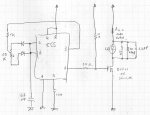I've noticed that we don't have any pulsed drivers.
Let's say many members like me do not care a lot about burning stuff with lasers but are more interested in beam visibility; would it be possible to create a driver with the same dimensions as a flexdrive (or similar) that pulsed the laser diode? As long as it allows users to drive the diode to higher powers than CW drivers it should be a winner.
What do you think?
Let's say many members like me do not care a lot about burning stuff with lasers but are more interested in beam visibility; would it be possible to create a driver with the same dimensions as a flexdrive (or similar) that pulsed the laser diode? As long as it allows users to drive the diode to higher powers than CW drivers it should be a winner.
What do you think?







